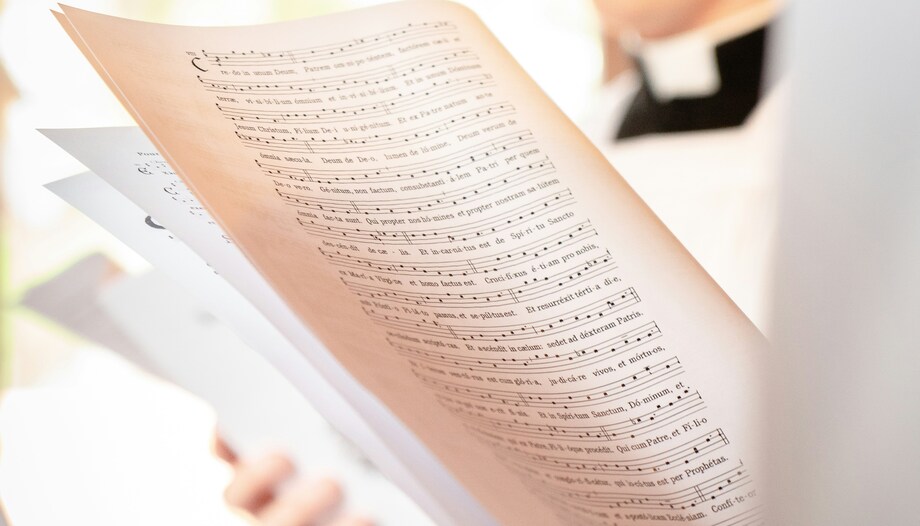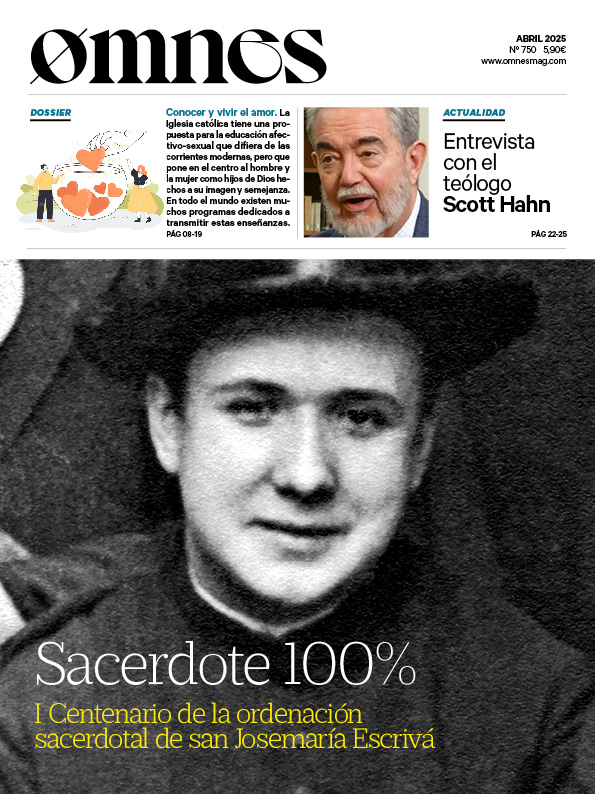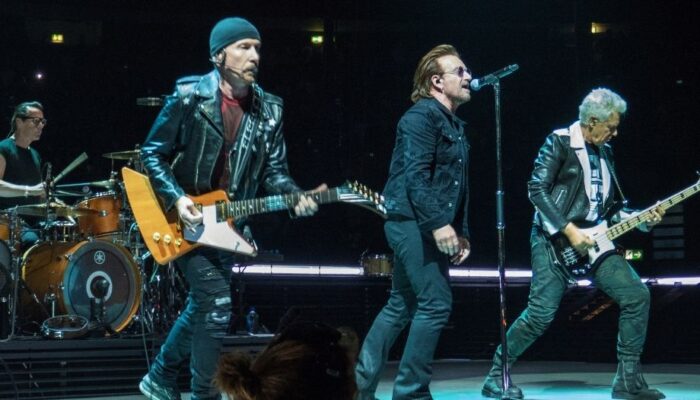Timothy McDonell is the director of Sacred Music at Hillsdale Collegewhere he directs the University Chapel Choir. Previously, Dr. McDonnell directed the graduate program in Sacred Music at The Catholic University of America. In addition, he was the choirmaster of the Pontifical North American College Choir at the Vatican before returning to the United States in 2008.
Thanks to his academic and professional work, Timothy McDonnell has deepened his understanding of the close relationship between Gregorian chant and the liturgy Catholic. Such a relationship that one cannot be understood without the other, so the director of sacred music encourages Catholics to restore Gregorian chant to its special place in the liturgy and to recognize its legacy.
How would you define Gregorian chant in musical and spiritual terms? What makes it unique within the Catholic liturgical context?
- This brings us to the heart of the matter, because all sacred music is special and reserved for sacred purposes. But Gregorian chant in particular has some special characteristics that I believe make it especially suitable for the Catholic liturgy and reflect the spirituality of this liturgy.
Among the characteristics I would list is directness, because Gregorian chant is a simple musical form, with only one musical line. So it has a certain simplicity, but at the same time it is a very refined music. It is music that has taken centuries to be created, but it retains that directness and simplicity in its expressiveness.
The other thing I would mention would be that it comes from a tradition, which I think is very important in a religious context because the premise of religion is that there is a transmission, that we pass on from Christ and his mission given to the apostles.
This idea of a musical tradition in the Church is a kind of symbol of that process of transmitting the treasure. And so music itself is a kind of metaphor for tradition in musical terms. For example, the different modes or tonalities in which Gregorian chant is composed are derived from ancient formulas for reciting and singing the Psalms.
And the third point I would make is that the liturgy itself is designed and coordinated perfectly with liturgical chant. Gregorian chant always refers to something outside of itself: to the liturgy, on the one hand, and to Sacred Scripture, on the other. So it is profoundly biblical music. In a way it embodies the chant of Scripture.
What has been the most profound influence of Gregorian chant on the evolution of the Catholic liturgy?
- The liturgy has gradually changed over time. This is an important idea because the liturgy and its music grew together. To give an example, between the seventh and ninth centuries Gregorian chant was composed by the clergy responsible for the creation of our liturgical calendar.
These clerical musicians chose liturgical texts, which themselves suggested a melodic content. In other words, the melody emerges from the text. And so when this changes the text, there is an influence on the liturgy.
The Second Vatican Council brought significant changes in the liturgy. How do you see the relationship between Gregorian chant and the liturgical reforms of that period?
- This is an incredibly important point. In fact, it is perhaps the most important consideration in terms of music and liturgy in our time. For if music is something that is passed down from generation to generation like a treasure, we have to understand liturgical reforms in the context of the reception of that treasure. So if we stray too far from what we learn from the musical treasure of the Church in the way we pursue liturgical reform, there's going to be too much of a disconnect with our tradition.
I think it is crucial that we understand that music provides us with a context in which to understand all the other ritual changes that have taken place. And I can give a couple of positive and perhaps negative examples of this.
There has been, for example, a process of recovery in the liturgy of the Divine Office around the hymns of the Divine Office. Because in the 17th century, there was a revision of the hymns that changed the original hymns, and all the texts were recreated. And we lost something very important because of those changes.
After the Second Vatican Council something wonderful happened, and that was that those hymns were restored. And so they became the official hymns of the Divine Office. This is a positive example where the recovery has taught us something about our past and we have had a kind of restoration.
But these things were not taken especially seriously by the generation that followed the Second Vatican Council and there was a lowering of ideals. And I think that was partly because of practical circumstances. There was a loss of energy and vigor to pursue that.
Now, the good news is that in the younger generations there is a growing interest in finding the energy to do what the Council called for with regard to restoring Gregorian chant and making it a central mode of prayer for the whole Church.
On the other hand, it should be noted that the prayer of the Mass has been made shorter in the reformist liturgy, yet the music is sometimes too long. So here is a case where music and liturgy are not compatible in a certain way. This is a challenge we have to face.
Another challenge in this regard is that there is a kind of politicization of the objectives of the Second Vatican Council. There is a "progressive" and a "conservative" side. This is something that the Council was not looking for, but people decided to politicize the liturgy and turn it into a political matter, instead of being the vessel of truth from which we learn our faith. However, I am hopeful that we will return to this idea that music is a companion to the liturgy and we can listen to this received tradition as we look at the prayer of the Church.
Do you think that this debate we have now in the Church about the Novus Ordo and the traditional Mass is going to affect prayer in the Church and Gregorian chant within the liturgy?
-There are many criticisms in this regard. There are those who think that those who support the traditional Mass are stuck and unrealistic. Honestly, I don't think that's what motivates people who come to the traditional Mass. I think in this rite they hear the voice of the Church in a special way and it moves them in a way that the Novus Ordo does not.
Anyway, I think that the Church is the same voice all the time. There is no yesterday, there is no tomorrow, there is only a now in which the Church is praying, it is Christ who prays today through the liturgy. He is here now praying with and as the Church, because he is the head. If we keep this in mind, perhaps the debate about past, present and future could calm down a bit.
As for this issue having an effect on prayer, Pope Benedict XVI had a very good idea on the subject when he said that the old form has to inform the new form in the liturgy. These two things have to be seen as compatible and not in opposition.
The music itself is a link between the Novus Ordo and the tradition. If we decide that we need a totally different music for a new liturgy, we will have lost some connection to this idea that we received the liturgy from the ancient Church.
Now, Gregorian chant is not as old as the prayer of the apostles, that is true. We don't really know where it comes from or when it begins. However, there are several theories that claim that Jewish prayer formulas influenced its development. Knowing this, if you could hear the way the apostles, who were Jewish, prayed, wouldn't you want to know more about it?
As an expert in this field, what challenges does Gregorian chant face in the context of the contemporary Church?
- During the last century and a half we can observe a kind of hatred for the past. I even think that some Catholics have realized that we should not be especially attached to the past, because then you are not living in the present and you are not facing the real challenges of our day. This inordinate attachment is not healthy, but neither is it healthy to feel hatred towards the past, because it is essential to understand who you are and where you come from.
In terms of liturgy and sacred music, the most important thing in understanding the liturgy is its history. And what is the history of the liturgy? The history of music. You have to know them together because music and liturgy were the same thing, they didn't develop independently.
In the 20th century this idea that music and liturgy are two different worlds took root. But historians show us that this is false and that one cannot understand the history of liturgy without understanding the history of music.
For all this, we have to lose the fear that if we look at our past we will somehow fail in our present. It is not a rational fear. If I do not understand and value the past, that history we have mentioned, I have nothing to carry forward. Therefore, I am forced to constantly invent reality.
We cannot forget that religion connects us with the past, we cannot be religious without carrying the past with us.
With this challenge in mind, we need to know that Gregorian chant is not only ancient, but regenerates over time. It is not stuck, but evolves. It is essential that musicians understand this idea and make it part of their education.
What steps can be taken to preserve the practice of Gregorian chant within the liturgy?
- I think it is important to recognize that Gregorian chant has multiple levels. There is a congregational level and then there is a more developed level, in which the congregation can participate but which requires more practice. Above that, there is a level of Gregorian chant that is reserved for more experienced people.
For me this is a beautiful thing, because it reflects the liturgy itself. In the liturgy there are things that only the "experts", the priests, can do. That is, liturgy is hierarchical, just like music.
What happened is that at the time of the Reformation that hierarchy was broken. Therefore, in order to move forward we have to recognize that Gregorian chant is hierarchical, just like the liturgy, and that is why we need specialized musicians. We also need to promote the practice of chant in the congregation so that they can sing things like the Credo, the Kyrie Eleison or the Agnus Dei.
Another aspect to consider about which there are different opinions is the openness to sing in the vernacular language. I think it is possible to translate musical pieces into other languages, but it takes a lot of discipline not to lose the original beauty.









